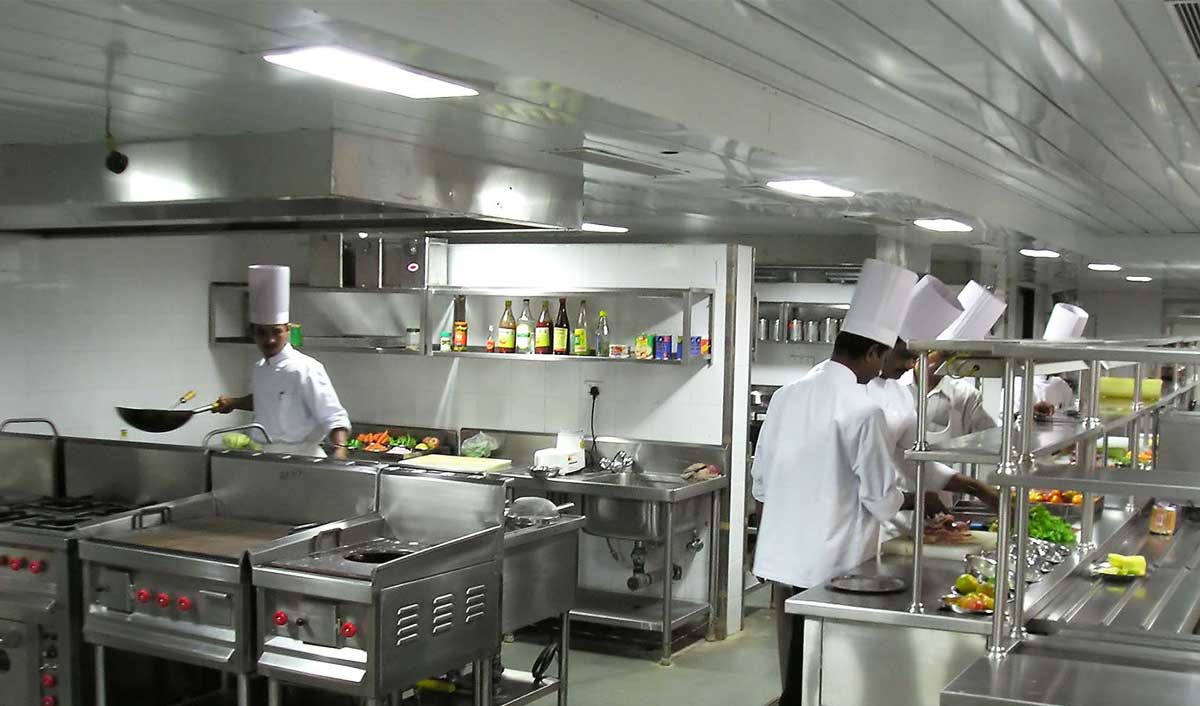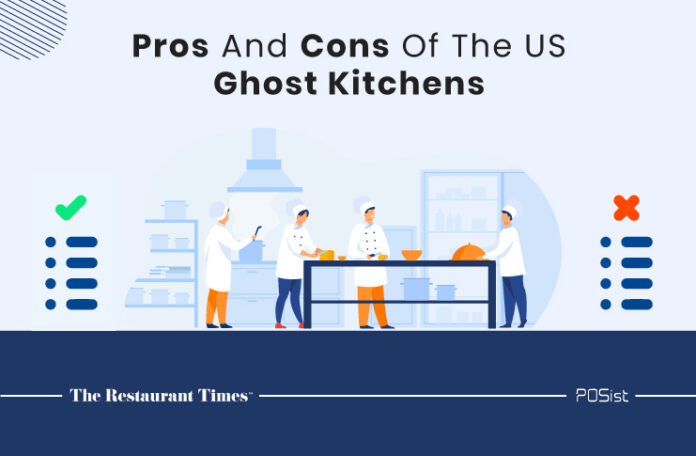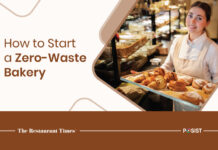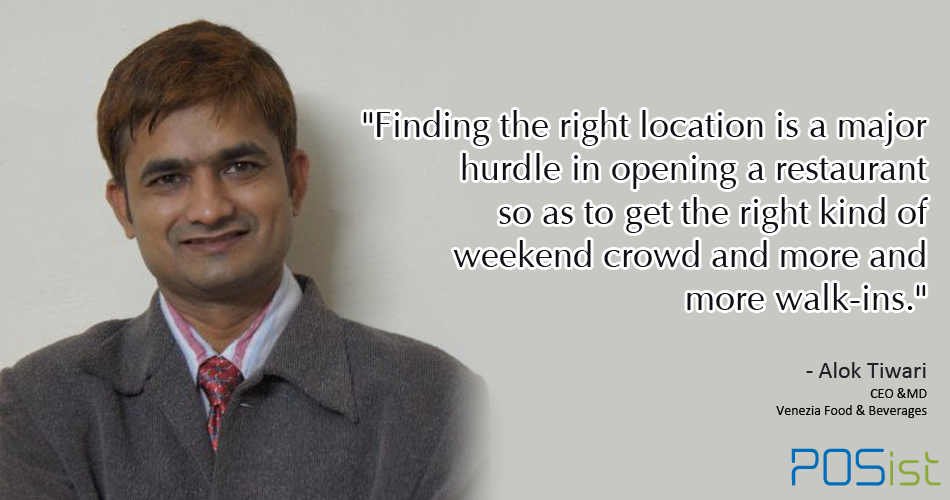Ghost kitchens, also referred to as cloud kitchens, are delivery-only restaurants that do not provide counters or dining rooms. Through the years, ghost kitchens have gradually become a permanent part of the foodservice industry. The COVID-19 pandemic has only made them more popular. There were 1500 functional ghost kitchens in the US by 2020 but an accelerated growth in numbers was seen post the pandemic.
Ghost kitchens are perfectly suited for the present scenario as they are the most efficient and cost-effective food service. Ghost kitchens also have a distinct advantage as they cater to a huge fanbase of this generation since they operate online. With so many cloud kitchens coming up, many restaurateurs have doubts whether they should set up their own cloud kitchen business or not.
This article aims to highlight the pros and cons of ghost kitchens to the restaurateurs to help them make a balanced decision:
5 Pros of Running Ghost Kitchens
Cloud kitchens promise a wider reach to restaurant operators by maximizing sales. Brands like Reef, Kitchen United and CloudKitchens have changed the face of foodservice in the US. Let us see what advantages ghost kitchens bring to restaurateurs.
1. Low Operating Costs
In the US, it might cost you $100k or even up to $1M to set up a new restaurant. However, ghost kitchens are much cheaper to set up and operate. Ghost kitchens only need a kitchen space and can be easily set up for as little as $40k annually.
There is no need for hosts or servers which drastically reduces the labor costs. Since these are not physical kitchens, they eliminate many expensive components like furniture, dinnerware decorations etc. You don’t have to worry about the ambience or regular maintenance.
2. Location
Physical restaurants need an ideal location for running their business successfully. In order to do so, they have to pay higher rents which impacts their overall budget. On the other hand, location flexibility is a key advantage of cloud kitchens in terms of rentals. All you need to do is choose a location that is fairly close to a customer base interested in delivery services. If you depend on your delivery partners, you won’t spend a dime over parking or walk-in traffic.
3. Quick Set-Up
Setting up a cloud kitchen is real quick. It’s a great solution for the new restaurateurs who want to start operations as soon as possible. With cloud kitchens, you don’t have to build up a whole new place for starting your dream business. You can start your journey in a garage or a basement with minimum equipment. You don’t have to worry about the infrastructure, be it fixing or renovation.
4. Easy Scalability
Starting a ghost kitchen hardly costs you a fortune. The first goal is to establish your virtual kitchen and develop all the business skills required to survive in this industry. Once you’re financially capable and confident enough you can scale your cloud kitchen to a physical restaurant. It’s no brainer that the expansion will be much easier when you start with a cloud kitchen initially.
Not just this, with a cloud kitchen, scaling to multiple outlets also becomes easier. With a quick setup process and low setup costs, it is easy to scale up your cloud kitchen brand to different locations as opposed to physical restaurants.
5. Freedom Of Experimentation
Ghost kitchen gives life to your creative ideas. Your entire business is online which gives you tremendous freedom to experiment and try out new things. You can introduce new items on your menu, and try them out. There is always scope to hop on the new trends and give it a run. Adapting according to the market is much easier with cloud kitchens as compared to traditional restaurants.

5 Cons of Running Ghost Kitchens
There are two faces to every coin, with each pro comes with a con. Let’s discuss the potential cons faced by owners.
1. Connection With Customers Is Low
Ghost kitchens do not offer an opportunity for brands to build a customer-centric community. There are no interactions with customers or regular staff. Since they operate behind the curtains, it gets difficult to build a relationship with the customers. The entire brand experience is largely virtual. This is why paying special attention to food packaging is indispensable for cloud kitchen businesses to convey the brand and communicate with the customers.
2. High Partner Commissions
Since delivery is the only service cloud kitchens provide, these kitchens rely on third party delivery applications. Lockdowns have led to a significant boost in delivery services, thereby making it crucial for cloud kitchen businesses to integrate with the food aggregators to get themselves discovered.
However, while this gives cloud kitchens access to a wider market, it also has some negative consequences. The US food aggregators like DoorDash, Grubhub, etc, charge a commission of 15-30% on the total order value. The hefty fees paid by the kitchens to the delivery partners thus cuts into a very thin margin.
3. Heavy Dependence on Technology
The cloud kitchen business is totally dependent on technology. With technological advancements, the productivity and cost benefits are substantial. However, it is not without its risks. Any glitch or power failure can cause problems in the functioning of the kitchen, from taking orders to accepting payments. Furthermore, the elimination of most of the human staff increases the workload for employees.
4. Tailored Meals Delivery
Ghost kitchens do not have much control over the presentation of meals. Add-ons sometimes get displaced or there may be seepage from the containers, thereby deteriorating the overall food presentation. Overall the food may arrive in a less desirable condition than expected. Cloud kitchen operators have to ensure that the food reaches their customers in a spill-free manner such that every element is rightly placed and they are satisfied with the food packaging and handling.
5. Reduced Visibility
Online ventures like these have limited customer interaction, therefore building brand loyalty and trust is not easy. Reaching out to users and seeking their validation is crucial for success. Virtual kitchens have to come up with different strategies to attract people and create a dedicated customer base.
Integrating with food delivery applications like DoorDash, UberEats, Grubhub, etc. is therefore essential for ghost kitchens to increase their visibility and expand the customer base. Having a strong social media presence as well as investing in search and display ads are key factors that determine the success of ghost kitchens.
No business is guaranteed success and ghost kitchens are no different. This concept is especially for people who really want to start their business in this industry. If you don’t have the resources but are headstrong about your idea then this can definitely set you on the right path. Ups and downs are part of the journey, the key is to face those challenges.


















